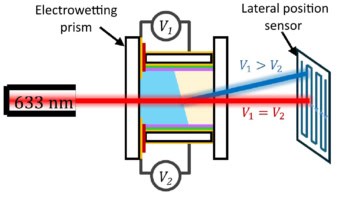A light-sensitive material developed in space could be used to restore the sight of people with damaged retinas. According to Alex Ignatiev, director of the Space Vacuum Epitaxy Center (SVEC) at the University of Houston, US, tests show that the ceramic photodetector will be compatible with the human eye, unlike earlier prototypes that were based on silicon. Human trials of the device are set to begin later this year.

Rod and cone cells in the retina of the human eye send electrical signals to the brain when they detect light. Certain diseases damage these cells and cause blindness, but do not affect the ‘wiring’ – which means that sight could be restored by implanting suitable artificial cells.
Now a photodetector developed at SVEC, which is sponsored by NASA, could fit the bill. The device consists of a thin film of lanthanum-doped lead zirconium titanate (PLZT). The material is grown layer by layer – or ‘epitaxially’ – using a process perfected during research under ultra-high-vacuum conditions in the Wake Shield Facility, a small space-based laboratory launched by the space shuttle into low-Earth orbit. The method produces a uniform crystal structure with optimum optical properties.
PLZT is a ferroelectric material, which means it contains tiny electrical domains, analogous to a ferromagnet. But PLZT also generates an electric field when it absorbs light – a phenomenon known as the photo-ferroelectric effect. Since PLZT is very sensitive to light at wavelengths between 450 and 700 nanometres, it is an excellent candidate for replacing rod and cone cells. “There is a nice overlap between the absorption of PLZT and the spectral sensitivity of the eye”, Ignatiev told PhysicsWeb.
Ignatiev explains that millimetre-sized arrays containing tens of thousands of the photodetectors – each just five micrometres across – could be implanted into the retina, where they would send electrical signals to the optic nerve. The team believes that the brain will learn to interpret the unfamiliar voltages sent by the artificial cells, but they are unsure what level of resolution the implants will achieve or how long they will last.



